

William Stopford
Every SUV, ute and van discontinued in Australia in 2025
1 Hour Ago
The Volkswagen ID.4 is one of the best electric family SUVs on the planet. Will it still be when it eventually arrives in Australia?
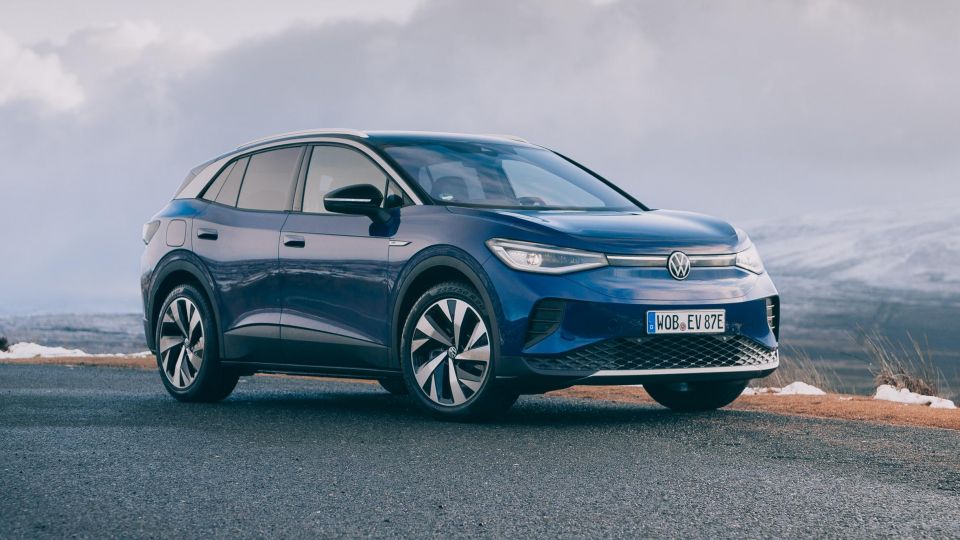
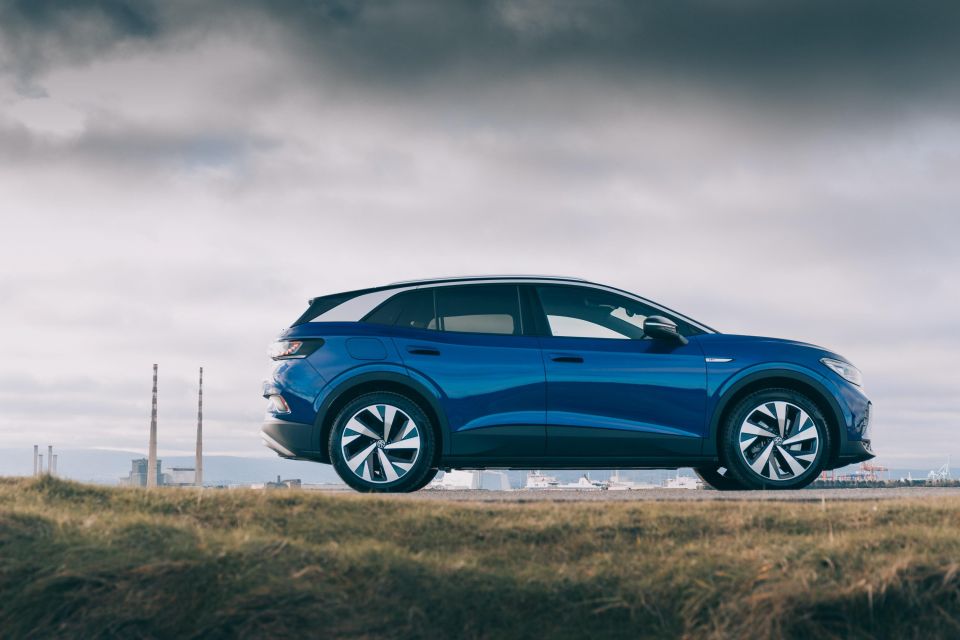

Contributor

Contributor


Contributor

Contributor
Where expert car reviews meet expert car buying – CarExpert gives you trusted advice, personalised service and real savings on your next new car.
Are you a Tiguan driver with one eye on the not-too-distant all-electric future of motoring? The new Volkswagen ID.4 should be squarely in your sights.
Admittedly, it looks like it will be late 2023 before the ID.4 arrives on Australian shores, so you have plenty of time to think it over.
But our first drive in Volkswagen’s all-electric SUV suggests it could be worth waiting for.

Your guess is as good as ours, frankly. As the ID.4 won’t be here for a couple of years, Volkswagen Australia is understandably reticent to discuss pricing.
In the countries it has gone on sale in already, the pricing waters are muddied by the variation in national incentives to buy electric cars. Without them, the ID.4 looks to cost as much as a well-specified Tiguan Allspace, so say $60,000 here.
A wide range of models will be offered globally, with two different battery capacities, several levels of power output, and even a high-performance R derivative with all-wheel drive.
In Germany, buyers can choose from the City, Pro, Pure, Life, Business, Family, Tech and Max variants.
Which will come to Australia? We have no idea at this stage.
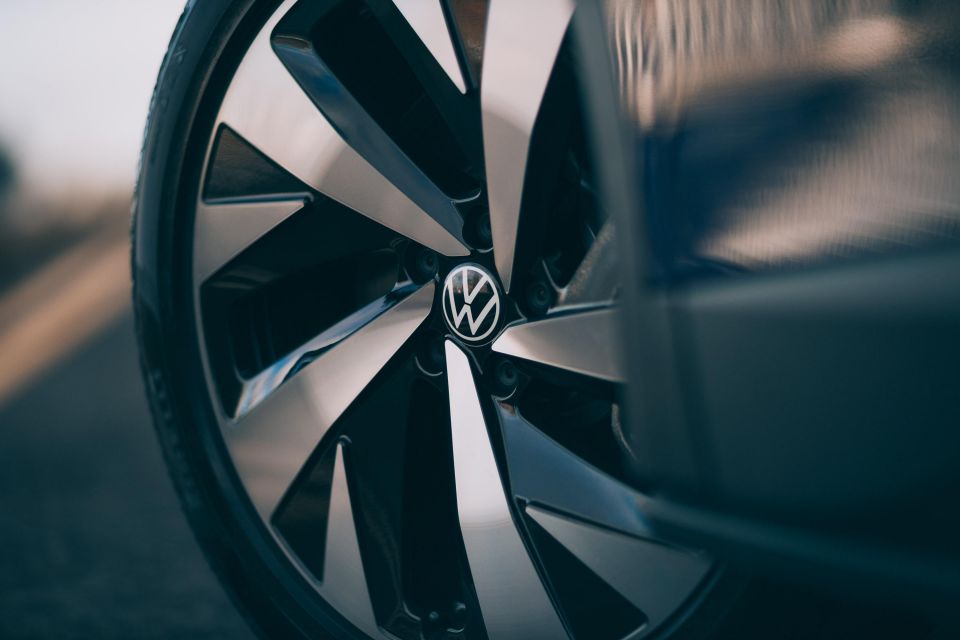
Buy your new car without the stress. It's fast, simple and completely free.

Great service from Travis and team, second time I have used this business would not hesitate to recommend them to anyone
Craig C.
Purchased a Ford Ranger in Sunshine Coast, QLD
CarExpert helped Craig save thousands on his Ford Ranger, now let us save you on your next new car.
Find a dealSee above… In fairness, in most markets, the only models detailed to date are the ‘1 Edition’ cars, as tested here.
Our test vehicle was the ‘1 Max’, which was positively loaded to the gunwales with equipment. That specification will be pared back further down the range, obviously, but it’s worth looking at some of the new equipment to see what is on offer.
LED technology makes up most of the exterior lighting on all versions of the ID.4, saving energy while looking sharp. Some models will get the ‘IQ.Light’ Matrix LED headlights, with 18 LEDs apiece.

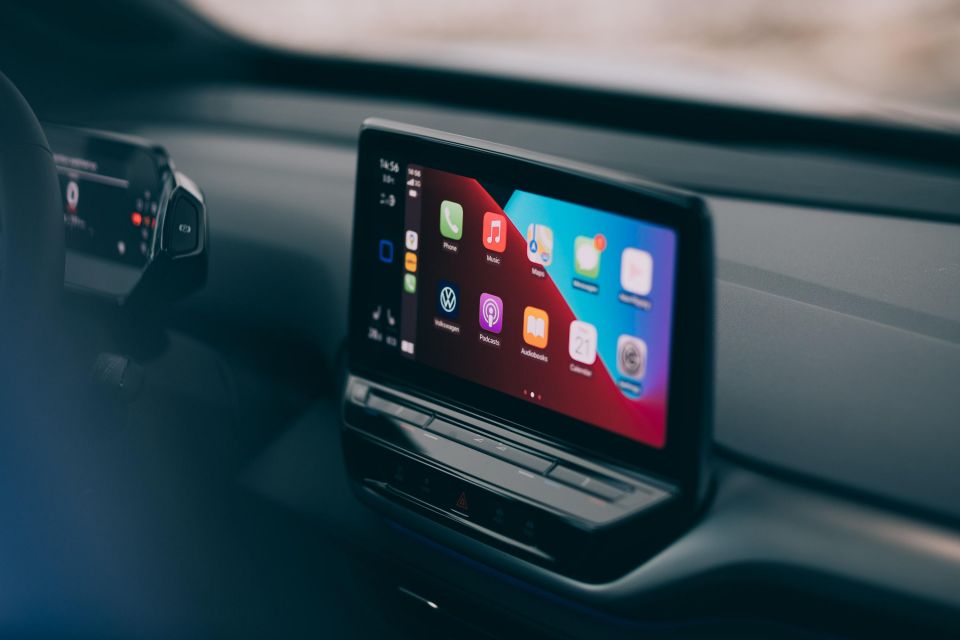
Eleven of those can be switched off or dimmed as needs be, to illuminate the road ahead at night on main beam while avoiding dazzling oncoming traffic. Inside, there’s something called ‘ID.Light’, which is a light strip at the base of the windscreen that can communicate various functions and warnings to the driver.
There’s a double-glazed windscreen to reduce noise on the 1 Edition models, but we’re not sure if it will be standard across the range.
Projected onto that on high-spec versions will be an advanced new augmented reality head-up display, which works brilliantly.
Along with the regular ‘flat’ read-out of speed and other information we’ve seen on other cars, the ID.4’s display can add details to your view of the road ahead.
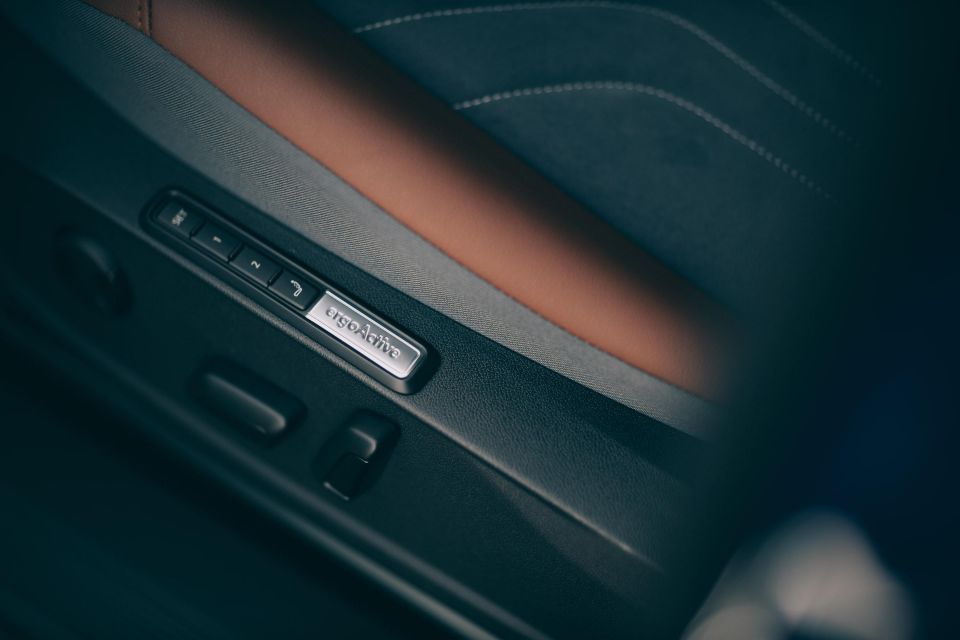
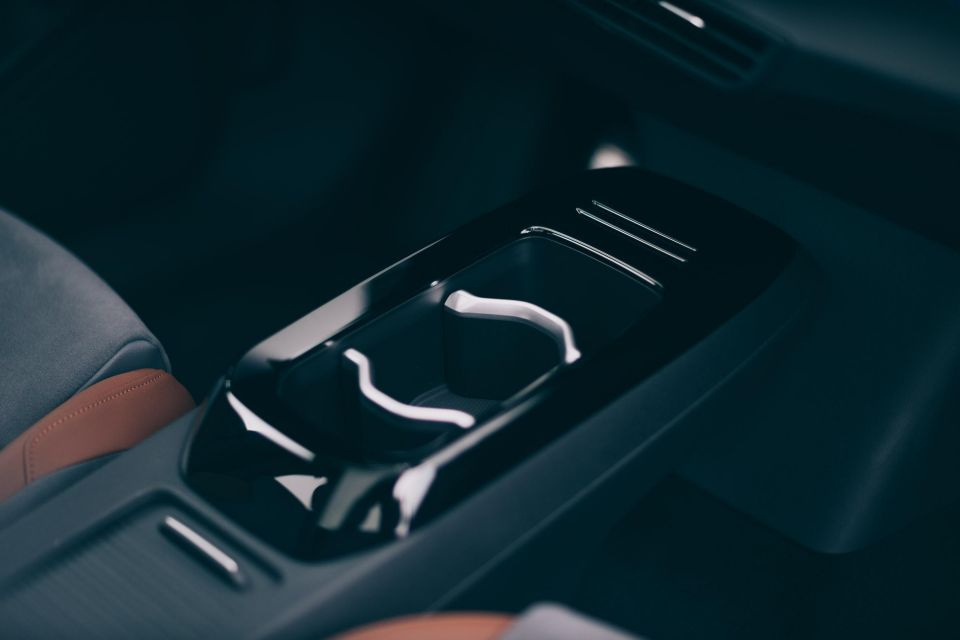
This includes directions for the navigation, which get larger in your field of vision as you approach the actual turn, along with warnings for keeping in your lane and adaptive cruise control. It’s genuinely useful rather than intrusive or annoying.
Sticking with the interior, all versions of the ID.4 get digital instrumentation and a touchscreen in the middle, angled toward the driver.
It’s a 10.0-inch display at a minimum, upgraded to 12.0 inches across the diagonal on some cars.
Both run the same snazzy looking menu system and there’s a wealth of connectivity built into the car thanks to the integrated SIM card.
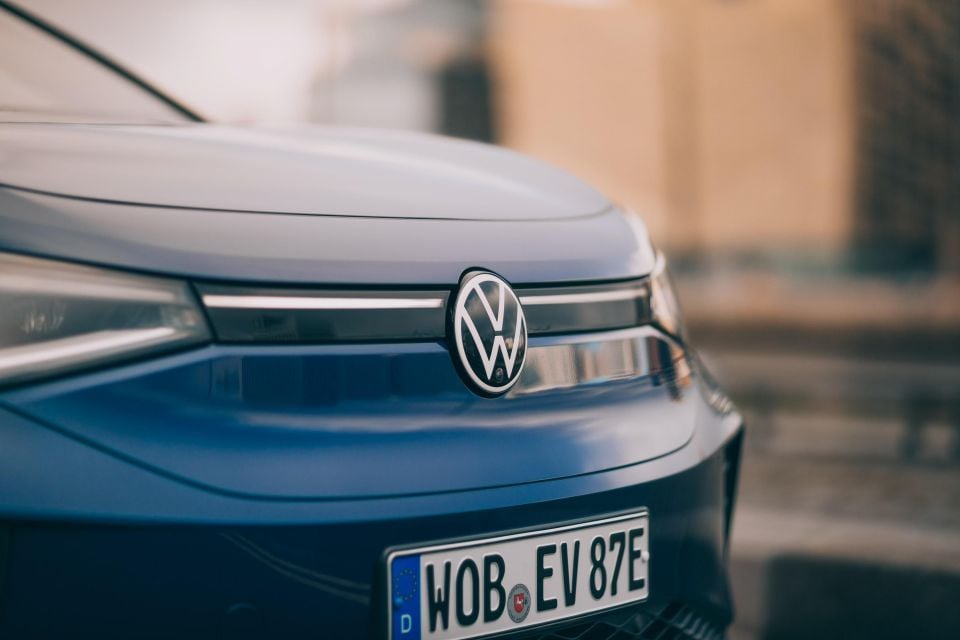
The ID.4 hasn’t yet been destroyed by ANCAP or its European equivalent, so we don’t know how it will fare in a crash.
Nonetheless, Volkswagen has confirmed all versions of the ID.4 will get a lane-keeping system (called Lane Assist), along with Front Assist (AEB) to monitor, warn and help with reducing collisions of many different types.
All ID.4s also get ‘Car2X’ tech that can send hazard information to cars nearby and to infrastructure that can handle such data and disseminate it.
There’s a lot more available, but likely to be bundled together as an upgrade package that will include proactive occupant protection that closes the windows and tensions the seat belts before an imminent crash.
Travel Assist is an advanced version of adaptive cruise control, Side Assist monitors the road to the side and behind the car, and Emergency Assist can safely stop the car when required if it’s deemed the driver cannot.
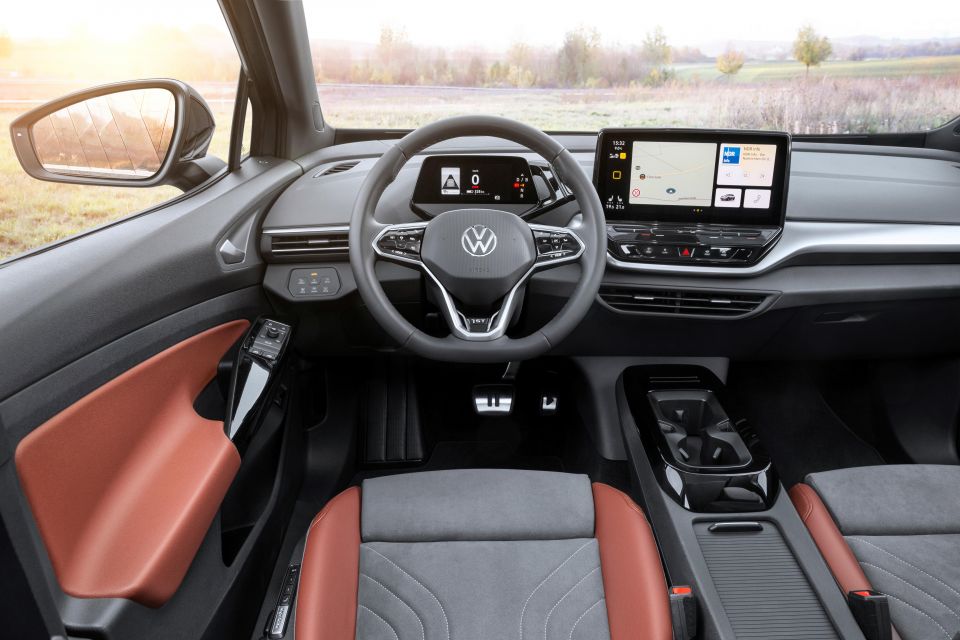
If you’ve not yet sat in the advanced new cabin of the Golf 8, then the ID.4’s will feel like a vision of the future, as it takes a quantum leap forward from most other Volkswagens currently on sale in Australia in terms of the dashboard design and layout.
Whether that’s a good thing or not is up for debate, but even compared with the Golf’s focus on digital interfaces, the ID.4’s is advanced.
As mentioned above, all cars get digital instrumentation ahead of the steering wheel and a large touchscreen. The latter controls virtually everything, including climate control, which makes for a wonderfully clean interior style, but we reckon physical buttons and dials can be safer and quicker to use on the move.
There are sliders on the base of the screen to adjust temperature and volume, but they are not as easy to use when driving as Volkswagen likes to say they are.
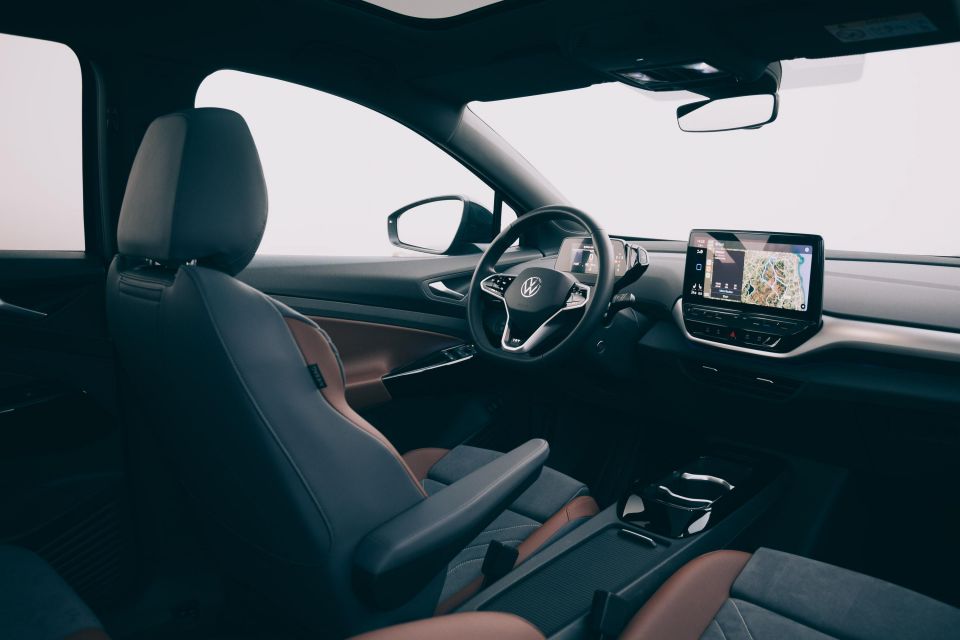
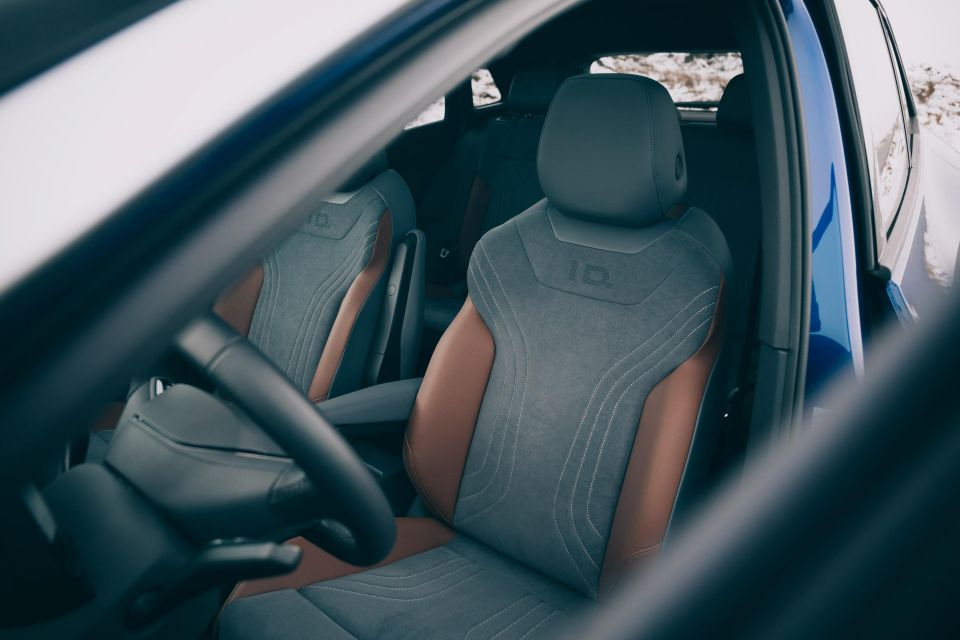
It’s worth noting here our experience with this digital dashboard in early production versions of the ID.3 and ID.4 has been marred by bugs in the system, and a sometimes noticeable lag between touching the screen and the relevant function responding.
The ID.4’s system was notably quicker, but still not perfect. The biggest issue we had with it related to the controls on the driver’s door. They’re mostly touch-sensitive and we found it difficult at times to select the rear windows, or change which door mirror to adjust.
You’d really hope all these glitches are ironed out before the ID.4 arrives here.
Aside from all that, the interior quality feels great, and the ID.4 is massively spacious inside – more so than the Tiguan for passenger space, even up front.
There’s loads of adjustment in the driving position, though you get a sense that you’re always sitting up higher than those in regular cars which helps with visibility.
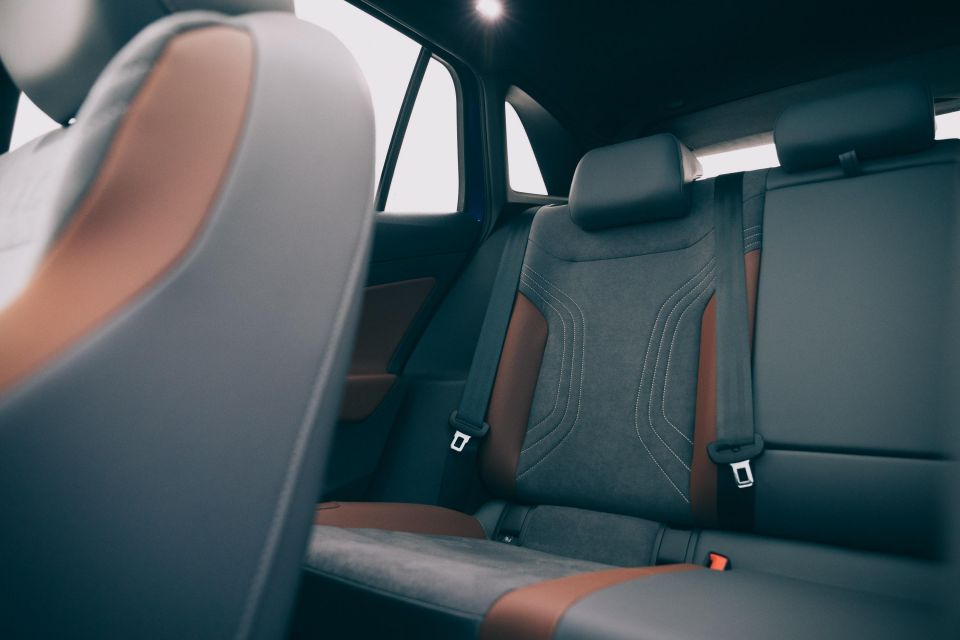
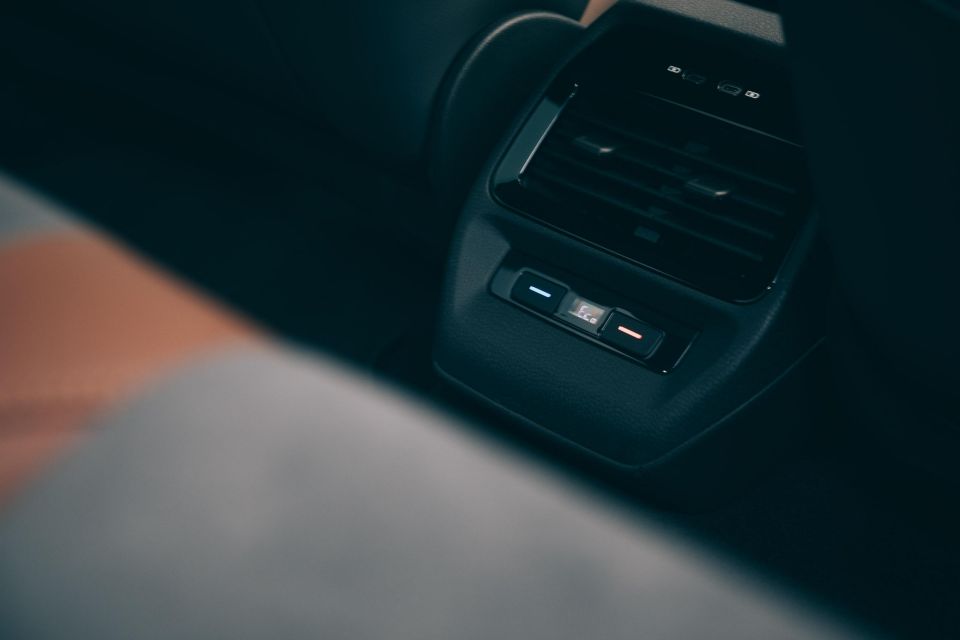
Between the front seats is a lot of useful storage space that can be configured in different ways, with two USB-C ports and, optionally, a wireless phone charging pad.
That’s great, but family buyers will be keen to know how much space there is for kids in the back. The good news is that there’s loads – the door openings are wide, so big adults will get in easily, and it’ll be simple to lean in and buckle up the small ones.
Speaking of which, there are ISOFIX mountings on the outer two seats, though the centre position is flat and quite wide, so it will be possible to get some combinations of three child seats in, depending on their size. Whoever is sitting in the back will find loads of headroom, knee room, and foot room across all three positions.
The seatback itself splits and folds down, making a flat load space depending on where the boot’s floor is set, and there’s a ski hatch in the middle.
There’s not quite as much luggage volume as there is in the regular Tiguan, but at 543 litres it’s up there with many crossovers of the ID.4’s size.
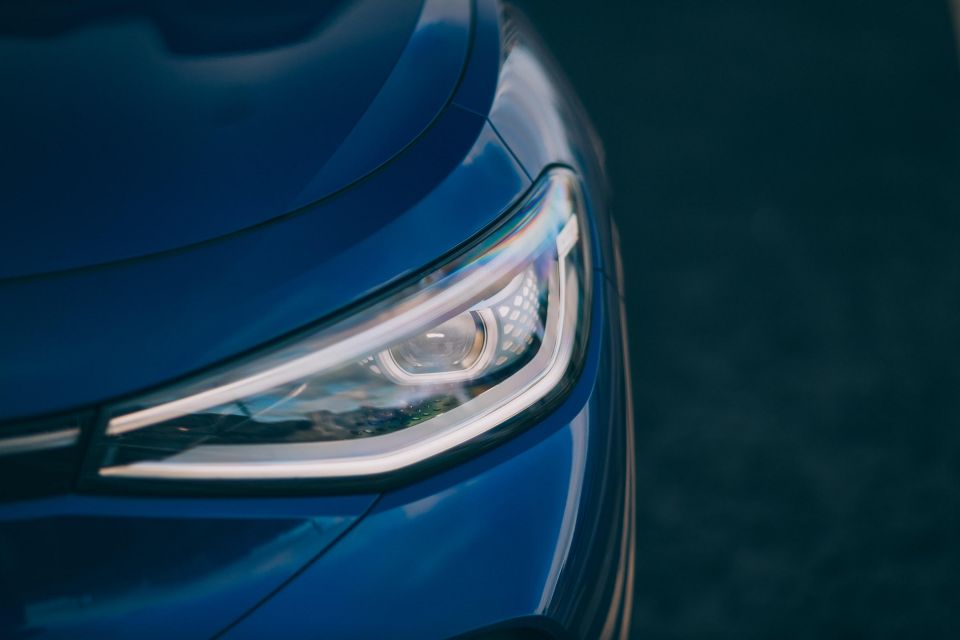
Technically speaking, not very much. Pop the hood for a look and you’ll find fluid top-up points, some electrics, and a whole lot of plastic.
All the interesting electrical components are hidden further back. Between the wheels, low down in the chassis, is the battery pack. There are 52kWh and 77kWh versions currently being manufactured.
They feed a rear-mounted electric motor, making the ID.4 rear-wheel drive, though we know Volkswagen is working on all-wheel drive options.
For now, the lower capacity battery can be paired with either 109kW/220Nm or 125kW/310Nm electric motors, while there’s a 150kW motor to take advantage of the bigger battery, as tested here.
This motor also makes 310Nm, though the battery is a considerable 150kg heavier. The motor is mounted just ahead of the rear axle line, and drives the rear wheels via a single-speed transmission.
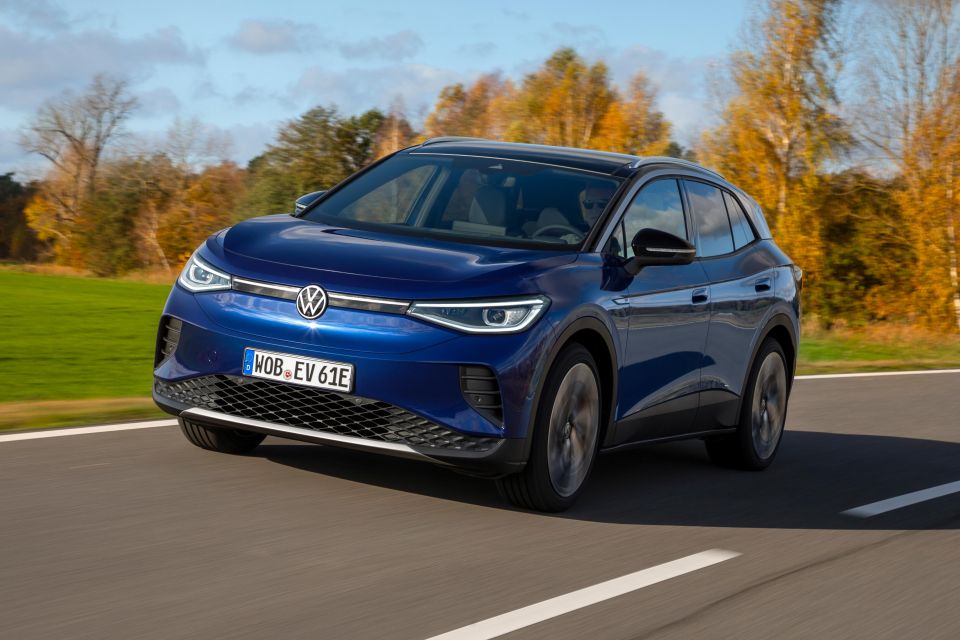
In a polished fashion, put simply. This is a brilliantly resolved car and yet one that couldn’t be easier to drive. Despite that, it’s also an enjoyable car to drive.
The drive selector is a bit odd at first, unless you’ve used the BMW i3’s similar dashboard-mounted item, but you don’t have to use it very often – and it frees up space in the middle of the car.
You choose between regular D for Drive or B for higher levels of brake energy regeneration.
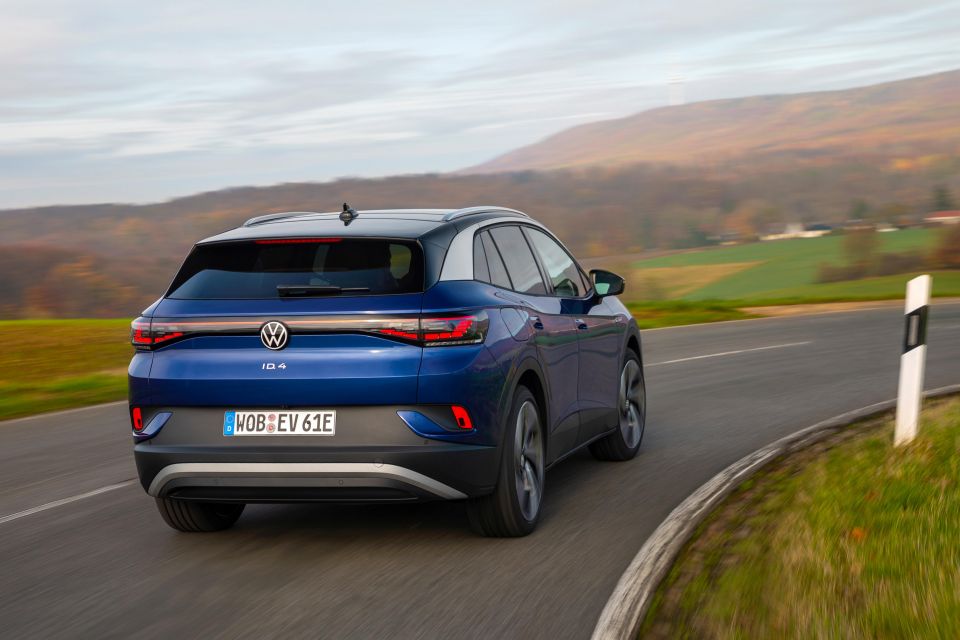
The latter won’t feel natural to electric car newbies, but you soon get used to ‘one pedal’ driving and it becomes a personal challenge to not use the brake pedal at all. The fact it means more energy recovered and a longer range between charges is by-the-by.
Volkswagen quotes a 0-100km/h time of 8.5 seconds for the 150kW model driven here and, while that indicates the ID.4 generates nowhere near as neck-snapping acceleration as the Teslas of this world, it’s still more than fast enough, especially as it’s seamless and silky smooth.
Those words could be used to describe the powertrain in general, as it’s effectively noiseless and free of any vibration or unexpected harshness.
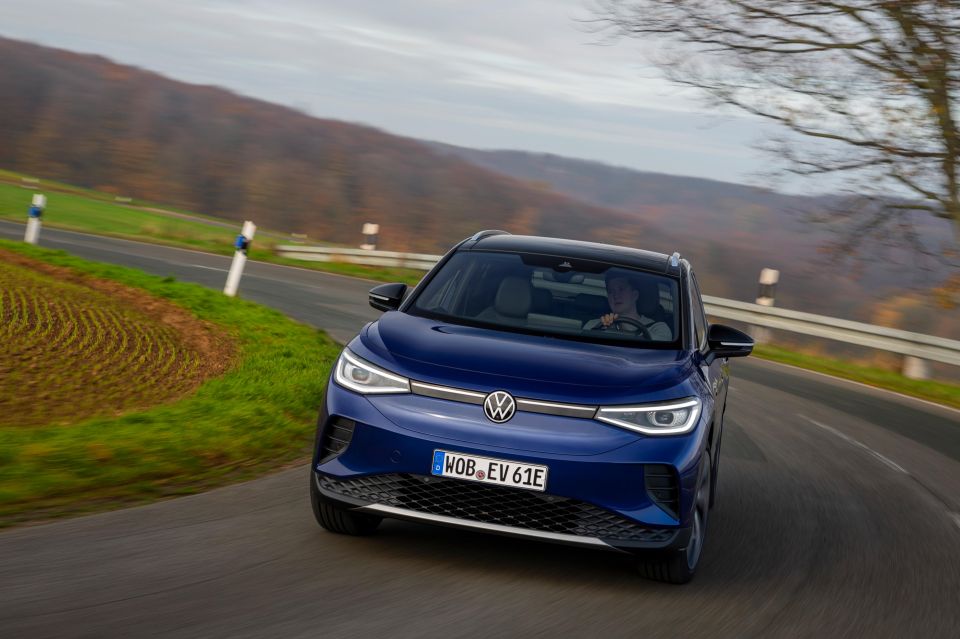
The civility doesn’t dissipate when you go faster. Even at highway speeds the ID.4 is quiet and refined. Our car had double-glazed side glass, as well as the acoustic windscreen which would have undoubtedly helped, but we don’t know if all models will get this useful upgrade.
Conversely, our vehicle had a panoramic glass roof, which can often generate unwanted extra wind roar. There was no evidence of that here.
On 20-inch wheels and fitted with adaptive dampers, the ID.4 is taut on the road without being uncomfortable. It’s no magic carpet ride, but neither should it make your passengers feel ill.
Turn the damping up to its sportiest setting and the ID.4 is remarkably controlled, keeping the body flat while cornering and allowing precise positioning on the road.

Where expert car reviews meet expert car buying – CarExpert gives you trusted advice, personalised service and real savings on your next new car.
The steering is free of slack and quite direct, the brake pedal feels well-modulated (we didn’t notice it transferring from using the motor to slow down to the conventional brakes once), and the car is quite responsive and satisfying to use.
Volkswagen says that the weight distribution is more or less 50:50 front to rear, and the ID.4 certainly feels well balanced.
The rear-wheel drive setup allows you trim its line in the corners, but the traction and stability control systems are so quick-acting you’ll never get it out of shape in normal driving, even in poor conditions. It’s a car everyone will enjoy.
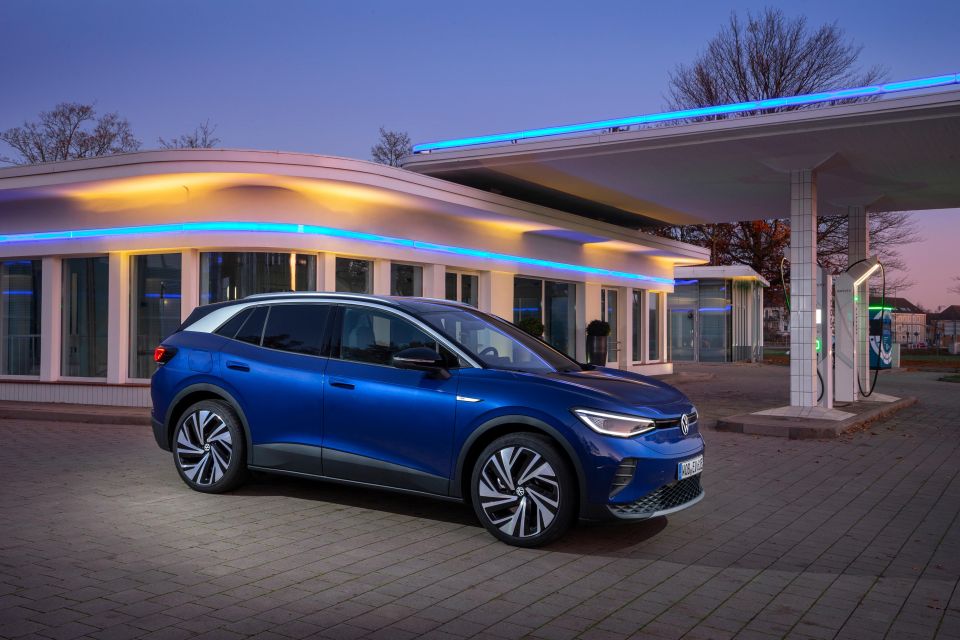
That will depend massively on when and where you charge it. And of course, how the Australian network of public charge points is looking when the ID.4 arrives.
Depending on specification and battery, Volkswagen quotes a maximum range of up to 522 kilometres, while the ID.4 officially can use as little as 16.7kWh/100km.
It should cost considerably less to fuel up than a petrol or diesel car and, with substantially fewer moving parts, it should also cost a lot less to maintain.
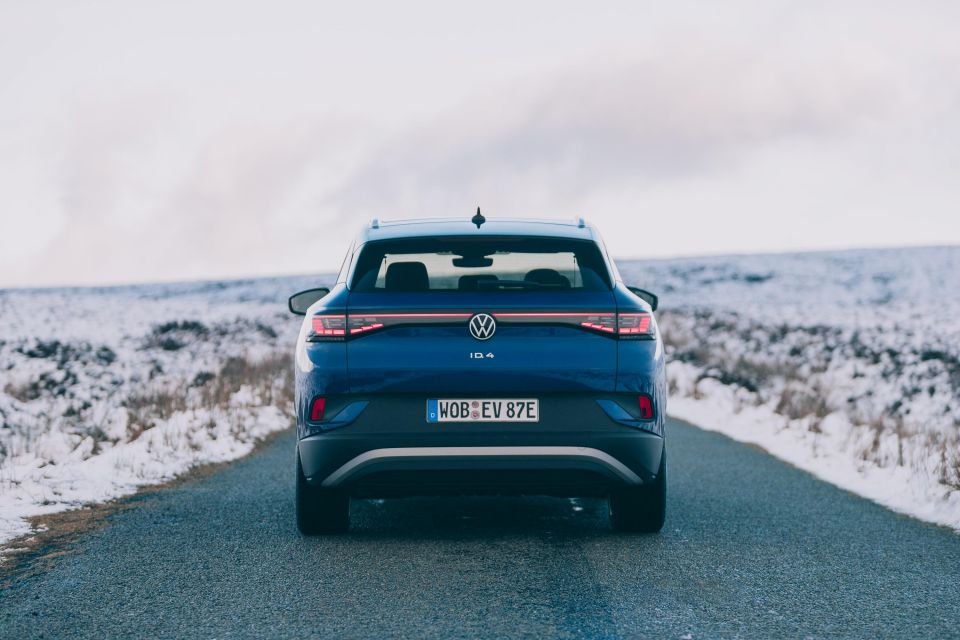
This is a polished and desirable mainstream product, as is Volkswagen’s way.
The ID.4 looks smart outside and in, is usefully spacious, crammed with the latest technology, and future-proofed for a move to electric power.
If it were on sale right now in Australia, and not horrendously expensive, it could help convince urbanites to move to electric power right away.
Will it still be as impressive against incoming competition when it finally does arrive here? Only time will tell.
Click on the images for the full gallery

Click on the images for the full gallery
Where expert car reviews meet expert car buying – CarExpert gives you trusted advice, personalised service and real savings on your next new car.


William Stopford
1 Hour Ago


Ben Zachariah
2 Hours Ago


Derek Fung
3 Hours Ago


Matt Campbell
9 Hours Ago


William Stopford
1 Day Ago


Josh Nevett
1 Day Ago